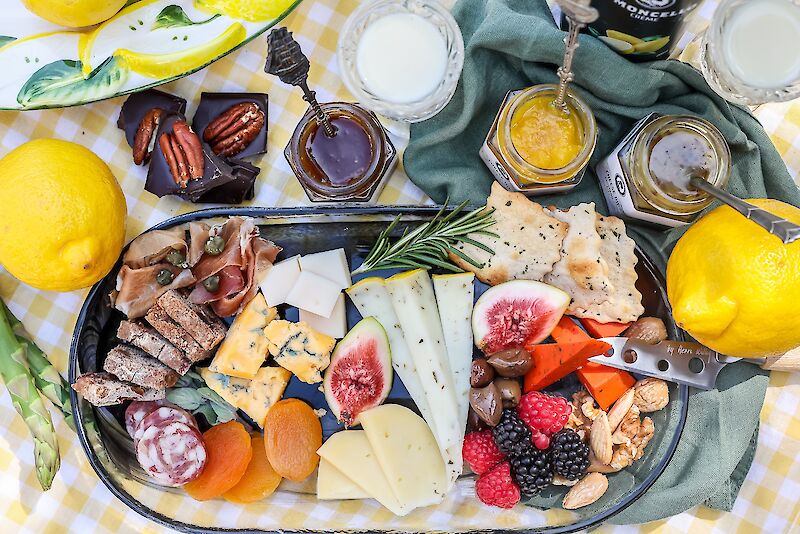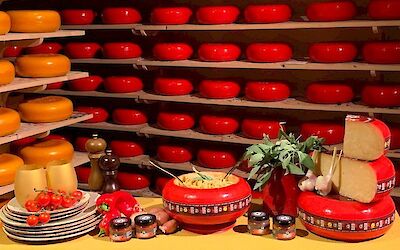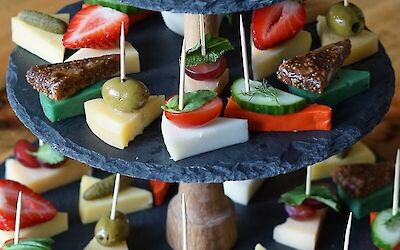Is feta cheese the same as goat cheese?
"Is feta goat cheese?" is a question often asked by cheese lovers. This article explains the difference between these two popular cheeses, with a focus on their origins, production process and flavour profiles.

What is feta and goat cheese made from
Feta is a traditional Greek cheese made mainly from sheep's milk, or a mixture of sheep and goat's milk. Goat cheese, on the other hand, is made entirely from goat's milk. These different milks give each cheese its unique flavour and texture.
Differences from goat cheese
Feta has a crumbly texture and a salty, sometimes spicy flavour. The ripening process in brine contributes to these distinctive characteristics. Goat cheese is milder, with a creamy texture and a slightly sharp aftertaste. Goat cheese production varies from fresh, soft varieties to more mature, harder forms.
The difference in production process
The production methods of feta and goat cheese also differ. Feta must mature in brine for at least two months, which gives the cheese its firm texture and salty flavour. Goat cheese has a more diverse ripening process, ranging from a few days to several months, resulting in different textures and flavours.
Feta and goat cheese in the kitchen
In the kitchen, feta and goat cheese each have their own uses. Feta is popular in salads, baked dishes and as a table cheese. Goat cheese is versatile in use, from spreads to additions in hot dishes. Each has a unique contribution to recipes, from savoury to sweet dishes.
Health benefits
Besides their culinary uses, feta and goat cheese each have their own health benefits. Feta, rich in calcium and probiotics, can be good for bone health and digestion. Goat cheese contains less lactose than many other cheeses, so it may be a better option for people with lactose intolerance. It is also rich in protein and essential nutrients. So choosing the right cheese depends not only on taste, but also on individual health needs and dietary preferences.
So, is feta goat cheese?
So, is feta goat cheese? No, Feta and goat cheese are distinctly different cheeses, each with their own characteristic properties. The choice between these cheeses depends on personal taste preferences and intended culinary use. At Henri Willig, we appreciate the diversity of these cheeses and offer lovers the chance to taste both and enjoy their unique qualities. If you already know which cheese is your favourite, order cheese easily online in our webshop!
Order via our webshop
Is this article already making you hungry?
Check out Henri Willig's delicious recipes below.
Making woolly cheese paste
Preparation Peel and crush or slice the garlic. Cut the rind of the sheep's cheese with a sharp knife. Remove the rind from the cheese. Hollow out the sheep's cheese and save this hollowed-out cheese. Keep about half of these chunks of sheep's cheese for another time in, for example, a casserole, on a croissant or over tortillia chips. A la minute Melt with a gas burner (which you use, for example, for&creme brulee) the other half of the sheep's cheese crumbles into the cheese and deglaze it with a generous splash of cognac, flaming the cheese deliciously. Melt the mixture into a nice cheese sauce and melt the cheese generously: the melting cheese creates the amount of cheese sauce you want through the spaghetti. Add the garlic and the Henri Willig roasted tomato dip and stir well. Meanwhile, cook the spaghetti according to the instructions on the packet. Add the cooked spaghetti directly to the cheese sauce in the hollowed-out cheese and stir. Garnish with fresh sage. Side dish A delicious tomato salad with big cheese crumbles completes the dish. Tip You can use the hollowed-out cheese in several ways. If you want to give a good live spaghetti demonstration to your table mates, make it for yourself first: that way you'll get the hang of it. Scrape the cheese thoroughly and burn the cheese with the gas burner to remove all residues (hygiene and turnover of the cheese is important and determines its shelf life). After use, store the cheese in the fridge below 4 degrees Celsius. Restart the recipe when guests come to feast. The cheese is usable until the last crumb, in soup, appetisers or in cheese fondue.
The perfect high cheese board
The preparation method for this colourful high cheese is very simple! Supplies: Plank Cheese knife Cocktail sticks Preparation: Uncrust the cheeses and cut the cheeses into wedges Cut the fruit and vegetables into pieces/slices Decorate the cheese wedges with the fruit / vegetables Present decoratively on a board and use a cocktail stick where necessary Make the number you need of each variation, e.g. 5.





